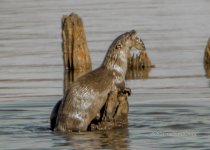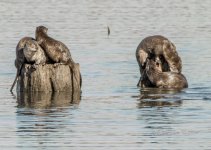Theraphosa
Senior Member
During a recent visit to Muscatatuck National Wildlife Refuge, I got to watch a family of nine otters play and hunt for over half an hour. I took a lot of pictures, these are some of the best. I'm still not satisfied with many pictures I take in direct sunlight.
I used the AF on the lens (Tamron 150-600), and maximum focal length for these, so I'm not totally surprised they're a bit soft, but I'm just not sure what I can do to get consistently better pictures under these conditions. Finding the wildlife is turning out to be much easier than getting the pictures I want.
Helpful suggestions would be appreciated.


I used the AF on the lens (Tamron 150-600), and maximum focal length for these, so I'm not totally surprised they're a bit soft, but I'm just not sure what I can do to get consistently better pictures under these conditions. Finding the wildlife is turning out to be much easier than getting the pictures I want.
Helpful suggestions would be appreciated.


